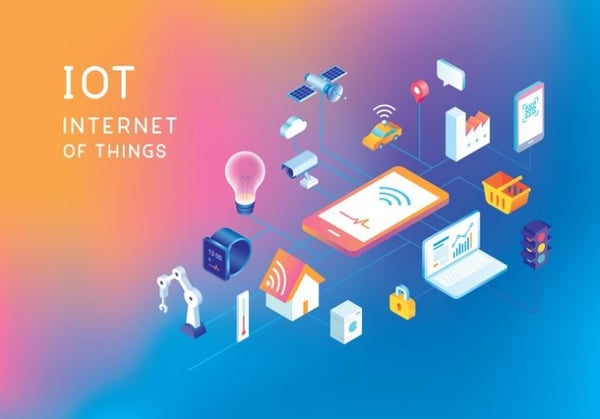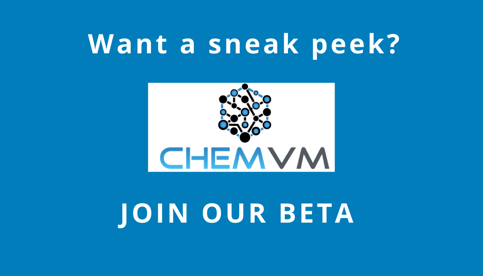The digital tidal wave is coming. Are you ready? (Part 2)
 Erik Viens
Erik Viens
In Part 1 of this story, I noted that while the way we, as consumers, buy books and groceries to how we rent lodging or find transportation has completely transformed, the buying process in the chemical industry has changed very little. However, in the four decades that I've worked in this industry, never have we faced greater change than now, and this dramatic digital transformation is happening due to three key drivers: Business, Technology and Societal.
In my first post, I discussed the Business Drivers, including the disruption of the value chain, big data analytics and globalization and consolidation. In this Part 2, I explain the other two drivers - Technology and Societal:
- Business
- Disruption of the value chain
- Big data analytics
- Globalization and consolidation
- Technology
- The Internet of Things, or IoT
- Cloud computing, computer applications, and advanced machinery
- Societal
- Next generation workforce
- Customers’ changing expectations for service
- Disruption and acceleration from COVID-19
2. Technology Drivers:
The way technology will change the chemical space is through a rather universal 3-step model of consolidation, collaboration, and automation. While we have done this for years, the “Internet of Things,” or IoT has really sped things up (fun fact: IoT came on the scene in the early 2000’s after Kevin Ashton used it in a presentation at Procter & Gamble to describe how sensors could act as the eyes and ears of the computer). Today, with additional thrust from IoT, we are collecting massive amounts of information in every aspect of life.
For instance, I get messages when an earthquake happens where my sons live in California. When an earthquake occurs, information is consolidated through instruments in the field, collaborated over multiple companies, and automated to be sent within seconds to people like me, whom the information is relevant to. The use of technology to understand data, why it’s relevant, and how to get it into the hands of the right people is a powerful thing. This is a game-changer, and we are already seeing it take hold in our plants with the Industrial IoT, or IIoT, and it will be incredibly important to the changes coming in the chemical space.
In order to consolidate, collaborate, and automate information and business processes, technologies such as cloud computing, applications, and communications are needed. These new tools and technologies combine to allow you to adjust and act quicker to create more value. To illustrate this, picture a valve, pump, or heat exchanger in a chemical plant. To make sure each piece of machinery is working properly, you need instruments to take measurements and tell you if the valve is open or closed, if the pump is operating at full speed, or at what temperature the heat exchanger is operating. Now, with the connectedness of sensors, communication via cloud computing, and computer applications that record, organize, analyze and control systems, we have more data and automation at our fingertips. And with cloud computing, it can be dispersed instantly to anyone at anytime, anywhere in the world with an internet connection.
These technological evolutions are directly tied to the changes happening every day in our society, and in many ways, it is technology itself that is fueling the societal drivers in the chemical industry.
3. Societal Drivers:
Just like in other industries, workers from younger generations are entering the chemical space and bringing new ideas to the table. These newer workers have grown up accustomed to technological innovation in their personal lives, and their life experience and expectations will have serious implications for the future of our industry. Consider that someone born in 2000 has never known life without smart phones, the Internet, or social media. They were four when Google was introduced publicly, five when YouTube started, seven when the iPhone was introduced, and 10- when they put their hands on their first iPad.

These revolutionary societal changes driving how business is done across industries start with new technologies that younger people accept as the standard (I would never consider buying a car from Carvana, but from evaluating their marketing, I’m clearly not their target buyer). Interestingly, while younger, newer workers won’t accept anything less, this has in turn driven new waves of knowledge and expectations in older workers.
Older workers in the chemical industry are having these realizations as well. In their personal lives, as consumers, they can track their $14 book order to see the exact date and time it will arrive at their house. Slowly, the expectations already holistically held by younger people are becoming the expectations of older people in both personal and business transactions. These expectations are translating into changes coming to the chemical space as chemical customers realize the potential for new levels of excellency that our industry has not yet reached.
These changing expectations are only being accelerated by COVID-19. Normal life for every human being has been turned upside down during this global pandemic. Six months ago, most had not heard of Zoom. Today, it’s an accepted part of our vocabulary in business (“Let’s get on Zoom and talk through that”) and our personal lives (how many Zoom happy hours have you been part of?). We are working, shopping and communicating completely differently than we used to. Take my mother, recently 80 who now has her groceries delivered and loaded directly into her car instead of shopping herself inside the store. Ironically she remembers as a kid the local “provisioners” who would deliver groceries, but that’s been long gone. This was not an online service she was aware of before COVID-19, but now, she won’t accept anything less. She learned a new set of expectations for how she can and should be served at the grocery store as a result of safely navigating the pandemic, and she is thus dissatisfied with anything less than this.
While it’s clear even that without the pandemic the chemical industry is moving toward change, COVID-19 has shown us that these steps toward change must happen faster in order for the industry to keep up with the rest of the world, especially in an industry that is so critical in fighting the pandemic itself and keeping everyone safe. We need chemicals to formulate vaccines, create sanitizers and disinfectants, and produce medications to help combat illness. Chemistry is key to the solutions our world needs right now, and technology is the key to pursuing those solutions during this time of drastic change. Broader than pandemics, chemistry is core to what will ease global food and water shortages, create clean fuels, and manage climate change. It’s actually a very critical time for our industry to transform to serve the world.
Conclusion:
As an executive of both major chemical companies and chemical distributors for decades, I had a front row seat in watching these market drivers converge on the chemical space, and I have been trying for years to change the industry. The idea of digital transformation in the chemical space is not new, but things still have not really changed at the user end of the industry. There hasn’t been a huge push to drive digital transformation because the customer expectations weren’t there. As a result, users haven’t been afforded the benefit of technology in the chemical space, other than doing a Google search on how to make something or find companies to make it for them. Up to recently, they were okay with that, but I know they soon will not be, no matter what generation they belong to.
On the supply side, many chemical firms have not made the transition to technological innovation. They have the capability to make the change—there’s nothing holding them back other than focus and application of capital. But CEOs and Boards have not been dissatisfied enough with the current state of the industry to change. Interestingly, in a recent contributed article by Deloitte analysts published in Chemical Week and on the Deloitte website, Deloitte analysts state that "Companies that had invested in digital initiatives across the enterprise saw those “pay off” in the environment of the early pandemic days."
However, I’m encouraged that the drivers I've outlined are working together to open chemical customer’s eyes. People are beginning to expect and demand much more in the way they’re served, regardless of industry. Companies like ChemVM and others, led by industry leaders who have the domain expertise and backing, are leading this digital transformation thoughtfully yet swiftly. There’s a great deal of data and intelligence that can be combined to create more efficiency and benefits, and I am hopeful that these steps toward digital transformation will mean more positive changes in the industry that will help service providers, customers, and all who benefit from the chemical space.



